Cantonese:
Mandarin:
English:
8. Ramsar Site
Formed by the deposition of sediments in the estuaries of Kam Tin River, Shan Pui River and other rivers, the extensive mudflats near Deep Bay serve as an important habitat for waterfowl. Every winter, tens of thousands of migratory birds including a number of globally endangered species stay here. Thus, the wetlands in Deep Bay area including intertidal mudflats, mangroves and fishponds are of international significance.
On 4th September 1995, an about 1,500-hectare area of mudflats, mangroves and fishponds in Mai Po and Inner Deep Bay was officially listed as a Ramsar Site for its international significance. "Ramsar Site" originates from the Ramsar Convention – or the Convention on Wetlands of International Importance especially as Waterfowl Habitat, which many countries signed on 2 February 1971 in the Iranian city of Ramsar, with the aim of promoting wise use and protection of wetlands. 2 Feburary each year is then designated as World Wetland Day to mark the date of adoption of the Convention.
There are several criteria a site must meet in order to qualify as a Ramsar Site. For example, Mai Po and Inner Deep Bay host over 20,000 waterbirds each winter; these include substantial numbers of endangered species such as Black-faced Spoonbill (Platalea minor). As well as the waterbirds, Inner Deep Bay's flora and fauna include 17 species of mammals, 21 reptiles, seven amphibians, 37 fish, over 400 invertebrates and 140 plants. The site indeed has high ecological value and is Hong Kong's prime ecological treasury.
Although most of Kam Tim River and Shan Pui River are not incorporated in the Ramsar Site, they play an important role in the wetland system by providing sediments and nutrients. To protect the Ramsar Site's ecology, several measures were adopted at the estuaries when river training works for Kam Tin River and Shan Pui River were carried out. They included preserving a number of fishponds, planting mangroves along riverbanks and retaining natural riverbed soil, etc
In recent years, many waterbirds have gathered in the estuary at Nam Sang Wai to feed during the winter, in turn attracting crowds of people to watch them.
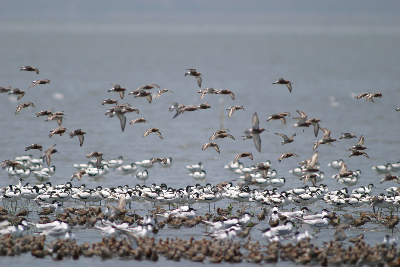
Thousands of migratory water birds visit Deep Bay during winter
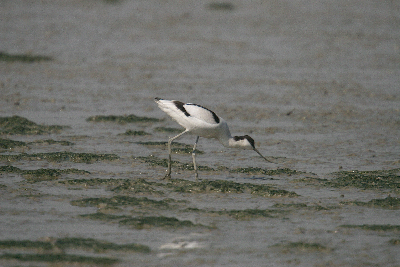
Pied Avocet, with its distinctive upturned bill
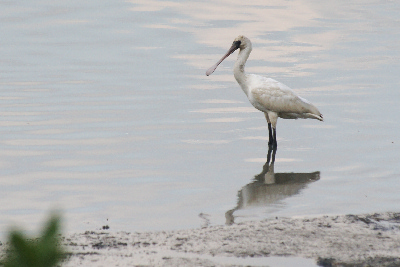
The rare bird Black-faced Spoonbill feeds in Kam Tin River channel
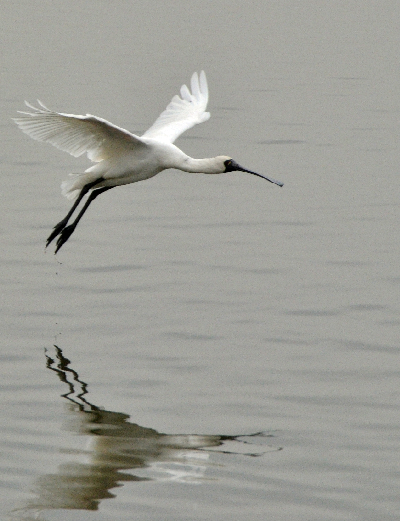
A Black-faced Spoonbill is flying elegantly
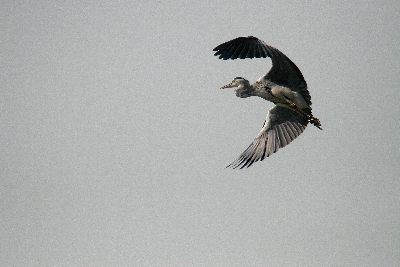
A Grey Heron takes flight
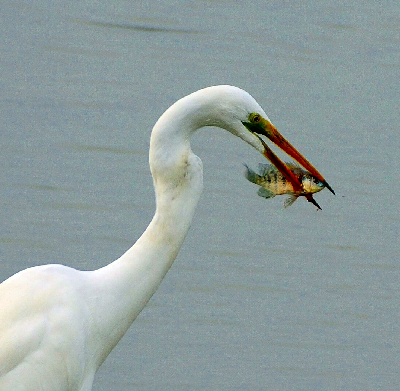
Great Egret the great "fisherman"

